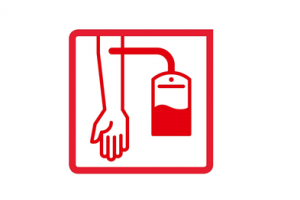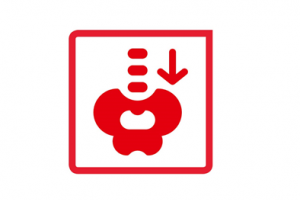It’s quick & easy to register as a potential stem cell / bone marrow donor but the actual donation process is more involved.
Stem cell donation: What’s involved
There are two ways in which donors may be asked provide stem cells – the decision as to which method of collection is most appropriate is dictated by the patients consultant:
 1. Peripheral Blood Stem Cell Donation
1. Peripheral Blood Stem Cell Donation
This is the method used for around 90% of donations. Stem cells are collected via the blood stream. To increase the number of cells in the blood stream, for four consecutive days prior to the stem cell collection, donors receive a daily injection to stimulate stem cell production (G-CSF). On the day of donation, the donor’s blood is collected from one arm and passed through a machine that separates out the blood stem cells (apheresis).
The remaining blood is returned to the donor through the other arm. This is a non-surgical outpatient procedure that takes around four hours. Most of the donations are through this method.
 2. Bone Marrow Donation
2. Bone Marrow Donation
Marrow cells are collected from the back side of the pelvic bone (not the spine). Donors are given a general anaesthetic so no pain is experienced during the marrow extraction. This is a 1-2 hour medical procedure. Some donors experience some short term pain, bruising and stiffness after the procedure.
Within a week of donating, most donors are able to return to work or school and resume their usual activities. There are many reports of donors experiencing little or no pain and discomfort and going back to work the following day. This method of donation is less used, only around 10% of the time.
Bone marrow donation was specified by Margot’s consultant for her bone marrow transplant.
For more video blogs from Katrina, please click here.
If you are yet to register as a potential stem cell or bone marrow donor, find out how to do so here: https://www.teammargot.com/how-to-register/ It only takes a few minutes and in the UK, you can have a DIY registration kit sent to you via the post, so you can register in the comfort of your own home.
You can save a life. Or as in Margot’s case, you can provide the gift of hope and more time with family and loved ones.
Thank you.
Team Margot’s mission
To help save and improve lives by educating, inspiring and motivating people, especially from ethnically diverse communities, to register as blood, organ, stem cell and bone marrow donors and to provide a range of support to families caring for child cancer patients.
Team Margot also provides secretariat support to the All-Party Parliamentary Group for Ethnicity Transplantation and Transfusion.